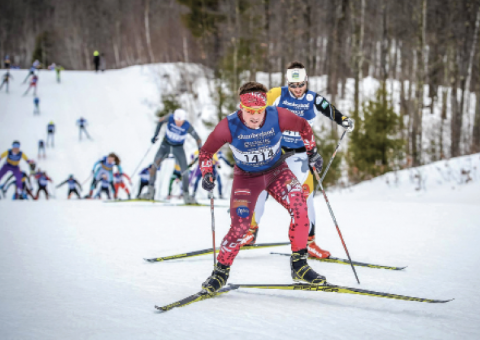
FIS calls for a ban on all fluorinated waxes for next season. By Greg Ditrinco
The International Ski Federation (FIS) surprised some ski-race insiders by calling for a ban on the use of all fluorinated ski waxes for next season. The announcement, made at the Federation’s annual fall meeting in Constance, Germany, will catalyze changes in race ski-prep procedures and technology.
“The use of fluorinated ski waxes, which have been shown to have a negative environmental and health impact, were banned for all FIS disciplines from the 2020–2021 season,” according to a FIS press statement released in November 2019. A working group will be formed to establish the new regulations.
The ban originated from the Committee for Competition Equipment, a panel that defines the technical specifications used across the FIS snow sports spectrum: alpine, cross-country skiing, nordic combined, ski jumping, snowboard, freestyle and freeski. The new working group has a rugged road ahead to unite a diverse array of nations and competitive disciplines to agree upon compliance standards.
The Norwegian Ski Federation banned the use of “fluoros” for all racers U16 and under last season, which was used as a test case by FIS to determine if a widespread ban was feasible, according to Ski Racing. Apparently, the answer was yes.
Fluorinated waxes significantly decrease friction and increase glide, and can be used across all ski and snowboard disciplines. As with all bans involving athletic performance or equipment, the success of a prohibition greatly depends on the ability to enforce the ban in the field and reliably test for non-compliance.
The waxes contain perfluoroalkyl and polyfluoroalkyl substances, collectively known as PFAS, which have been linked to a growing list of health concerns. The chemicals are found in drinking water and persistently remain in the food chain. Sometimes called “forever chemicals,” PFAS are resistant to moisture and extremely slow to break down. These are the same qualities that make them so effective in ski waxes.
From pine tar to fluorocarbons, waxing to win has been a constant in ski competitions. Ski waxing, however, long predates alpine skiing. It arose in the early days of Scandinavian ski-sport, from the coincidence that waterproofing wood also helps it to glide on snow. Whether you’re building a ship or a ski, you need to apply a preservative to wood. The earliest known preservative was pine tar, often called pitch.
Waxing evolved along with ski gear. Cross country racer Peter Østbye, born near Lillehammer in 1888, patented Østbyes Klister in 1913. By 1940, a rub-on alpine wax called 1-3-5 was sold under the brand Toko. In 1946, a company was founded under the name of Swix, a blend of the words ski and wax. Swix offered hard and soft waxes to cover a range of snow conditions, providing both glide and durability. Beginning in 1986, Terry Hertel in California and Swix chemists in Norway independently discovered that adding fluorocarbon to wax increased glide by two percent, which can determine the margin of victory in a race. Hertel introduced a commercial version in 1986; Swix followed in 1990, with a fluorocarbon powder that sold for $100 for three grams.
The growing use of fluorinated waxes came with increased scrutiny. Recent studies and subsequent publicity apparently accelerated the push for the ban. In 2016 Congress amended the Toxic Substances Control Act, requiring the U.S. Environmental Protection Agency to control chemicals deemed harmful to human health. As one result, starting in early 2018 the EPA notified all companies using fluorocarbons in their products to document the specific chemicals and amounts used. For ski wax manufacturers and importers this would mean reporting all chemicals – dyes, scents, waxes, hardeners and fluorines, retroactively. Most wax companies couldn’t afford the complex procedures and many immediately stopped selling and making fluorowaxes. Besides, the most common fluorines will be banned in the EU starting in July 2020. It was in this context that FIS imposed the new ban.
For more information on the history of ski wax, see “Grip and Glide” by Seth Masia in the June 2010 issue of Skiing History, or read a variation of his article online: skiinghistory.org/
history/grip-and-glide-short-history-ski-wax
